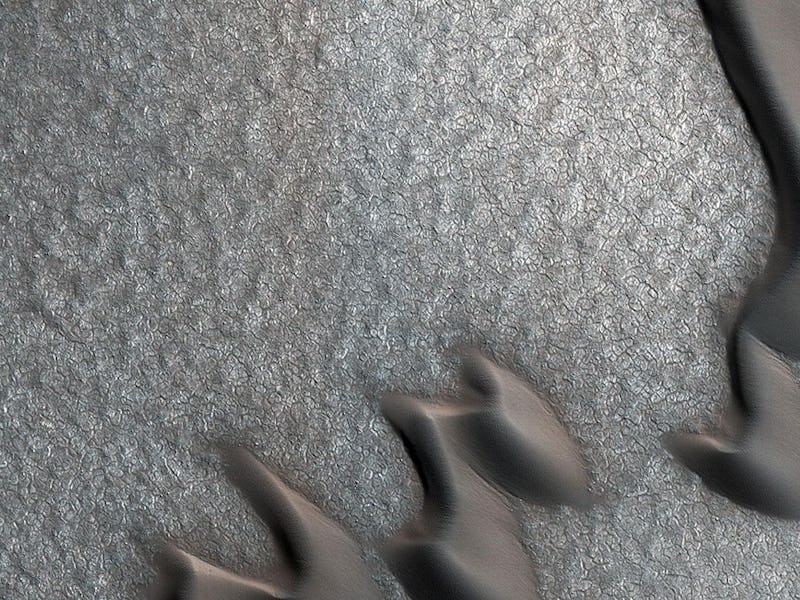These Martian Geological Formations Look Like Something Out of a Video Game
No sandworms included.

The Mars Reconnaissance Orbiter is whizzing around the red planet at a blazing 2.1 miles per second, constantly on the hunt for any changes on the Martian surface. On January 27, NASA astronomers were using the MRO to track movements of Mars’s serpentine sand dunes, but they ended up discovering an even more fascinating detail about our planetary neighbor.
Mars is known to have breathtaking sand formations. The ones captured in the image below look like a level out of the 2012 indie game Journey. But upon closer inspection, scientists realized that the ground underneath these dunes is equally as dynamic.
Join our private Dope Space Pics group on Facebook for more strange wonder.
The terrain surrounding the mounds of sand is almost perfectly organized, as if it were CGI. Parallel stripes of rock run from the top left of the photo all the way to the bottom right. NASA believes this phenomenon might be caused by a geological process that also occurs on Earth.
“In the Arctic back on Earth, rocks can be organized by a process called ‘frost heave,’” NASA states in a press release. “With frost heave, [repeated] freezing and thawing of the ground can bring rocks to the surface and organize them into piles, stripes, or even circles.”
Down here on Earth, one cycle of frost heave takes about a year because it occurs as our seasons and temperatures change. Since Mars has a much longer orbital path around the sun, this phenomenon might take much more time, creating distinct patterns.
Frost heave is also a bit of a nuisance for us Earthlings, as it “can be strong enough to move and damage roads, bridges, and buildings,” according to the National Snow & Ice Data Center. But over on Mars it’s more of the artist behind these mesmerizing geological formations.
A closer look at the texture of the ground surrounding the Martian sand dunes.
This image highlights how similar Earth is to Mars. Maybe one day when humans blast off to the red planet aboard SpaceX’s BFR, we’ll be complaining about frost heave’s effects on our landing pads.